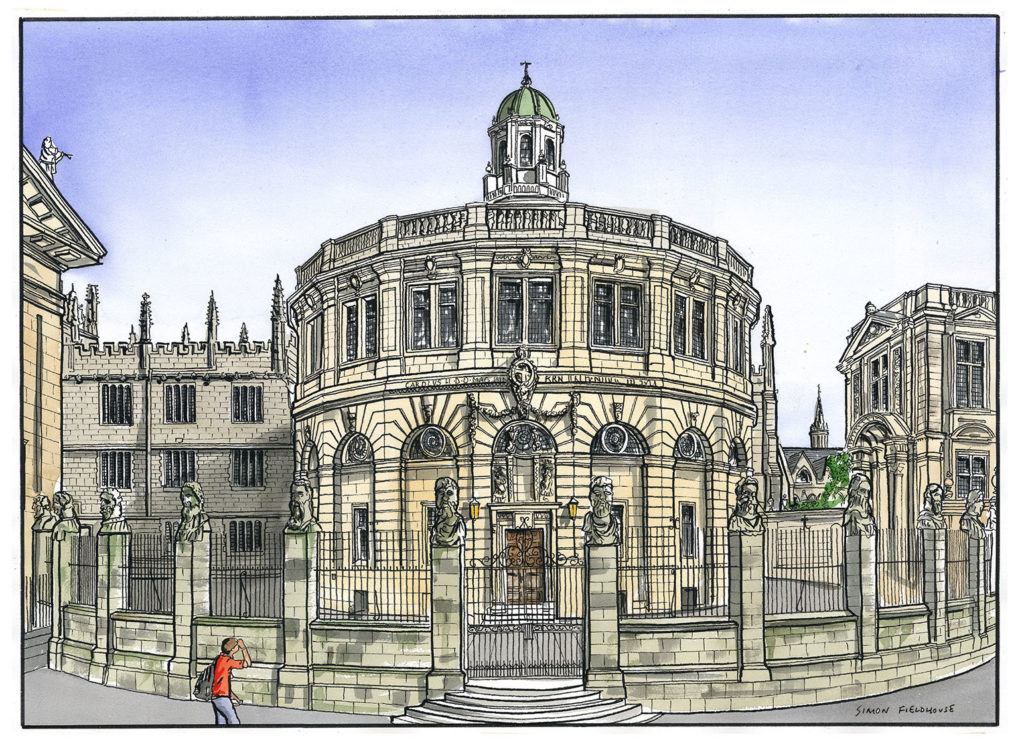
Sheldonian Theatre Oxford
Sheldonian Theatre Oxford, England, was built from 1664 to 1669 after a design by Christopher Wren for the University of Oxford. The building is named after Gilbert Sheldon, chancellor of the University at the time and the project's main financial backer. It is used for music concerts, lectures and University ceremonies, but not for drama until 2015 when the Christ Church Dramatic Society staged a production of The Crucible.
What came to be known as the Sheldonian Theatre was Wren's second work and was commissioned by Gilbert Sheldon, Archbishop of Canterbury. With the triumph of the Restoration and with it the Church of England, Dean Fell, Vice-Chancellor of the University, sought to revive a project proposed in the 1630s by the late William Laud, Archbishop of Canterbury: a separate building whose sole use would be graduation and degree ceremonies.
In the past these increasingly rowdy occasions had taken place in the university's church of St. Mary-the-Virgin-on-High. "The notion that 'sacrifice is made equally to God and Apollo', in the same place where homage was due to God and God alone, was as repugnant to Fell and his colleagues as it had been to Laud";[1] with this in mind they approached the Archbishop of Canterbury Gilbert Sheldon, for his blessing, his assistance, and a donation.
Sheldon was forthcoming with all three. He initially gave an impressive £1,000 (£137,983 today) and pledged to gather the needed money from like-minded sponsors. He had little luck, however, and ultimately financed nearly the entire £14,470 (£1,996,618 today) himself, in an age where a mid-level craftsman's wage was typically between £2 and £4 per year.
Wren's initial designs for the Sheldonian probably included a proscenium stage that did not survive his revisions. The building that was constructed was a sharp, unmistakable break from the Gothic past. According to Wren's son, Wren designed the Sheldonian based on Serlio's sixteenth-century engraving of the D-shaped Theatre of Marcellus erected in Rome in the first century BC.[2]
Like any Mediterranean theatre of that time, the Theatre of Marcellus had no roof: the audience relied on a temporary awning for inclement weather. But 17th century Oxford was not ancient Rome, and the Theatre needed a permanent roof. The span of the D-shaped roof was over 70 feet (21 m). However, no timbers existed that were long enough to cross that distance, and Wren dismissed the obvious solution of a Gothic roof. Instead, he decided to use the "geometrical flat floor" grid developed twenty years before by Oxford professor John Wallis.